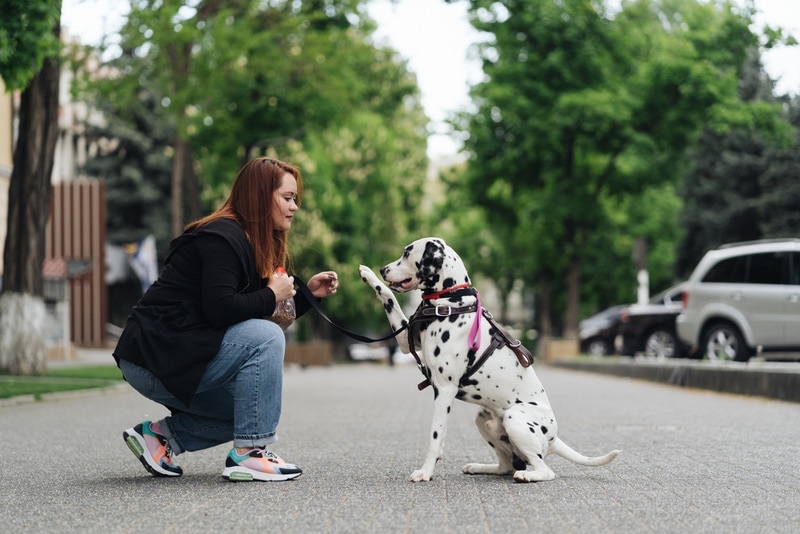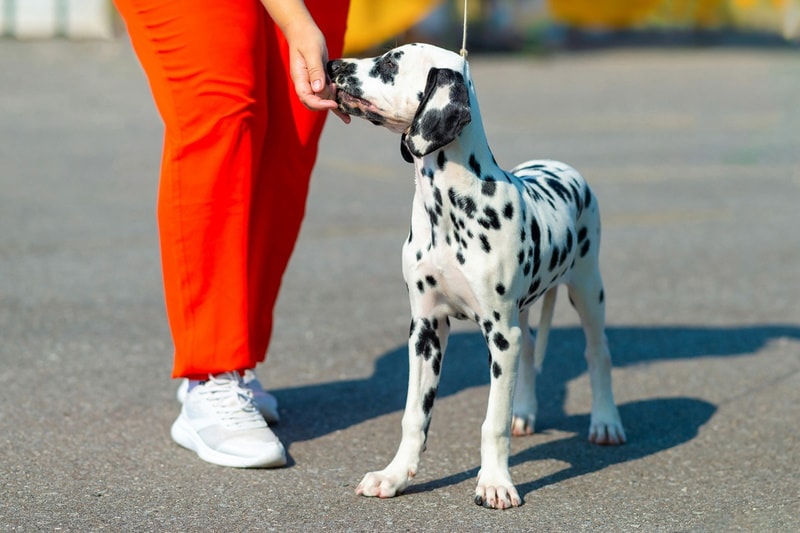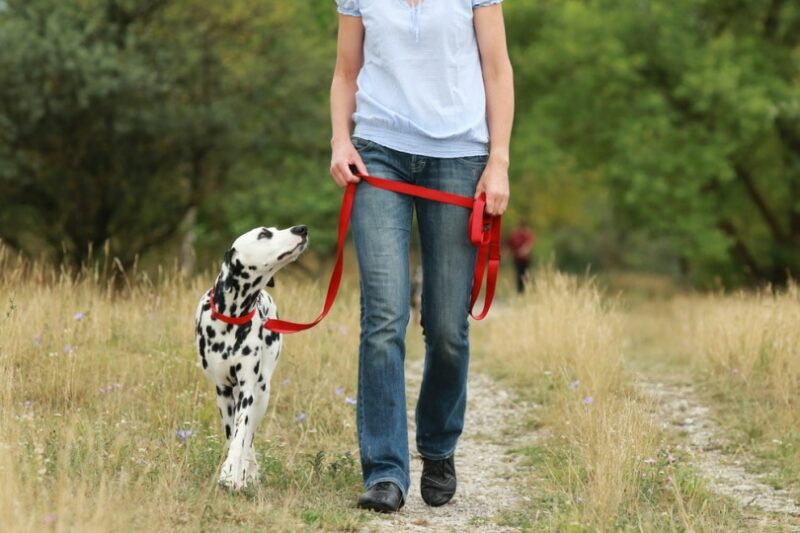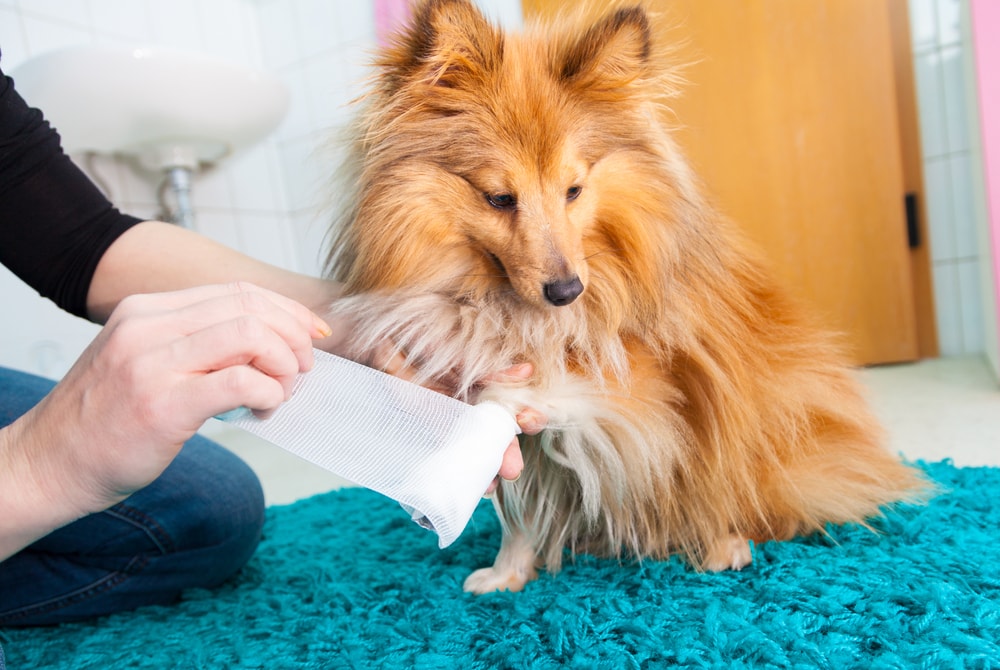How to Train Dalmatians: 8 Expert Tips
Updated on

Dalmatians were initially bred to walk behind a carriage, and they’re active canines that have no problem with exercise. The energetic dogs are well-known for their hunting and guarding skills but can be stubborn and sometimes difficult to train. Dalmatians can be quite the handful, meaning they need early socialization and training with a firm yet patient and loving hand. In this article, we’ll discuss seven expert tips on how to train your new Dalmatian, so join us.
The 8 Tips How to Train Dalmatians
1. Start at an Early Age
The earlier you start training your Dalmatian Puppy, the better off you’ll be. When you bring your Dalmatian home at 6 to 8 weeks of age, you should begin moderate training. Dalmatians love attention and are always eager to please their pet parents. However, if you don’t have the time or patience to train your Dalmatian Puppy, it’s best to hire a professional to train them.
2. Use Positive Reinforcement
Scolding your dog during training sessions is ineffective and cruel, and most Dalmatians are sensitive and may become hesitant to learn if they’re disciplined harshly. Using positive reinforcement is the best way to train your pet and involves rewarding your dog when it learns a command or trick. Dalmatians are food-motivated pups, and you’ll have more success if you find a treat they love and use it for rewards.

3. Teach Basic Commands First
Before you leash-train your dog, it’s best to familiarize it with the basics. With your treats in hand, teach your dog how to “sit” and “stay.”1 When your dog is standing up, hold the treat above its head, move it back slightly toward its tail, and say “Sit.” Your dog should sit when it tries to arch its head back, and you can reward it with a treat. When teaching your dog to stay, you’ll also need a release word, such as “OK.”
With your dog sitting or standing, back away and say “stay” while holding out your hand with the inside of your palm facing it. Walk back a few steps and say “OK.” If your dog stands still until you say “Ok,” give it a treat. You can gradually increase the distance between you and your dog before saying “Ok,” until your Dalmatian will stay when you’re several feet away.
4. Socialization Is Key
If you want your Dalmatian to get along with strangers and other pets, you’ll need to socialize it early. For instance, taking your dog to the dog park can help socialize the dog to get along well with other pets and other people.
You should watch your Dalmatian closely while they are socializing with other pets. If they seem anxious, it’s best to go home and try again another day. The point is to prevent aggression when your pup encounters strangers and other animals.

5. Leadership Training
When it comes to leadership training, you’re going to have to show your Dalmatian that you are the Alpha of your pack. You should keep your training sessions in all cases to between 10 and 15 minutes so as not to lose their attention. This will help you to avoid behavior issues in the future with your furry friend.
Your Dalmatian will take over and control a situation if you let them, especially when it comes to training sessions. If you use positive reinforcement methods, you will soon show the Dalmatian that you’re the leader but that you are kind and patient at the same time.
6. Leash Training
Since Dalmatians are eager to please their pet parents, they usually learn leash training pretty easily. It’s best to let your Dalmatian get used to the leash before you try to put it on the dog. Let your pup sniff and play with the leash, then try putting it on the dog for a few seconds at a time.
It’s best to have your first few leash training sessions indoors so that your pet doesn’t become distracted by the wildlife or humans outside. You can graduate to leash training outside after your Dalmatian becomes accustomed to the leash and harness. Never force or pull your dog on the leash to get it to do what you want, as that will only overwhelm it, and it’ll start to associate the leash with a negative experience.

7. Buy a Whistle
While this isn’t essential to train your Dalmatian the right way, many pet owners find that a whistle is beneficial to recall your dog when training. Since the Dalmatians is athletic, they love to run. Training the dog to come back when the whistle is blown can save you a lot of headaches when you’re training and even when you’re not.
8. Patience, Love, and Understanding
Our final tip for training your Dalmatian is to always have plenty of patience, love, and understanding during your training sessions. A Dalmatian can be quite willful, but in the end, they love to please their pet parents, so they will be willing to listen if you have a firm, loving hand. It’s imperative that you teach your pet good habits as a puppy, so they’ll retain those good habits when they are older.

Conclusion
Dalmatians are loving, loyal pets that every pet owner would be lucky to have in their home. However, they can be a handful in training, as they are willful, stubborn, and will take control if you let them.
If you decide to give a Dalmatian a forever home, following the tips above should help, but if you’re having problems, you can talk to your vet for recommendations on the best professional trainers in your area. When well-trained, Dalmatians are extraordinary pets that provide their owners with several years of love and loyalty.
Featured Image Credit: Arthur Bargan, Shutterstockg











